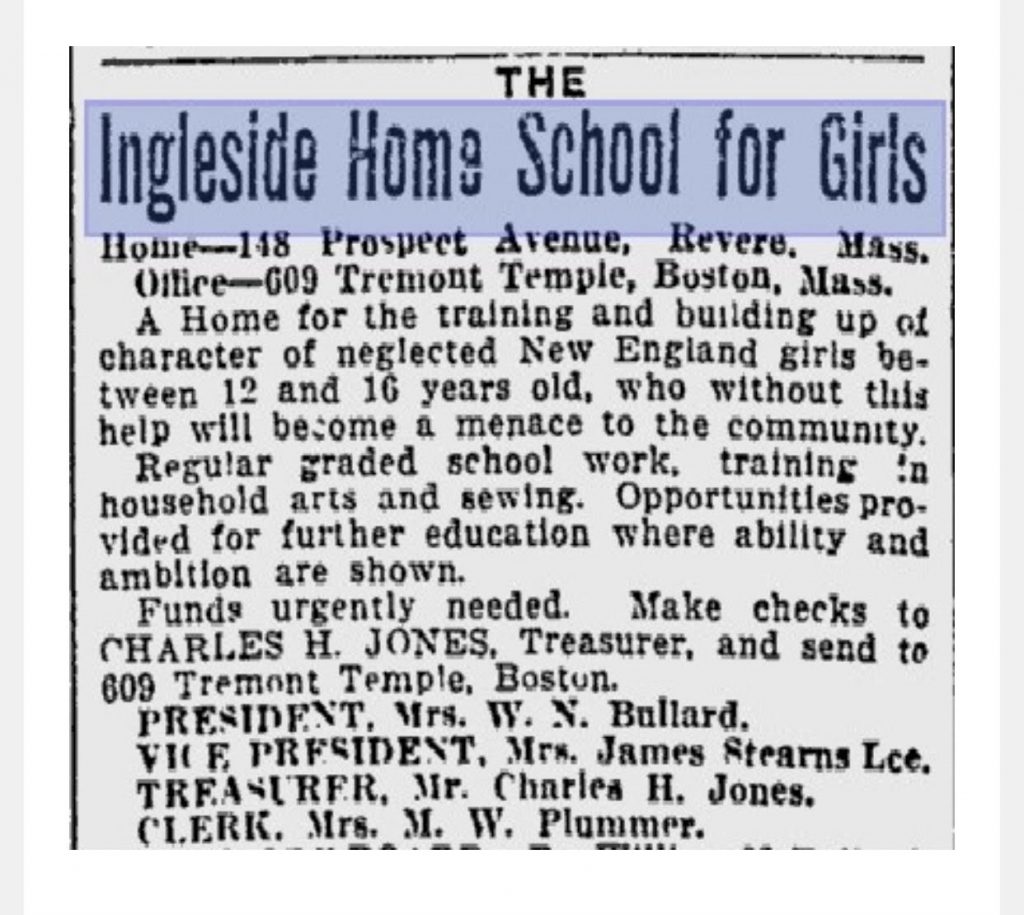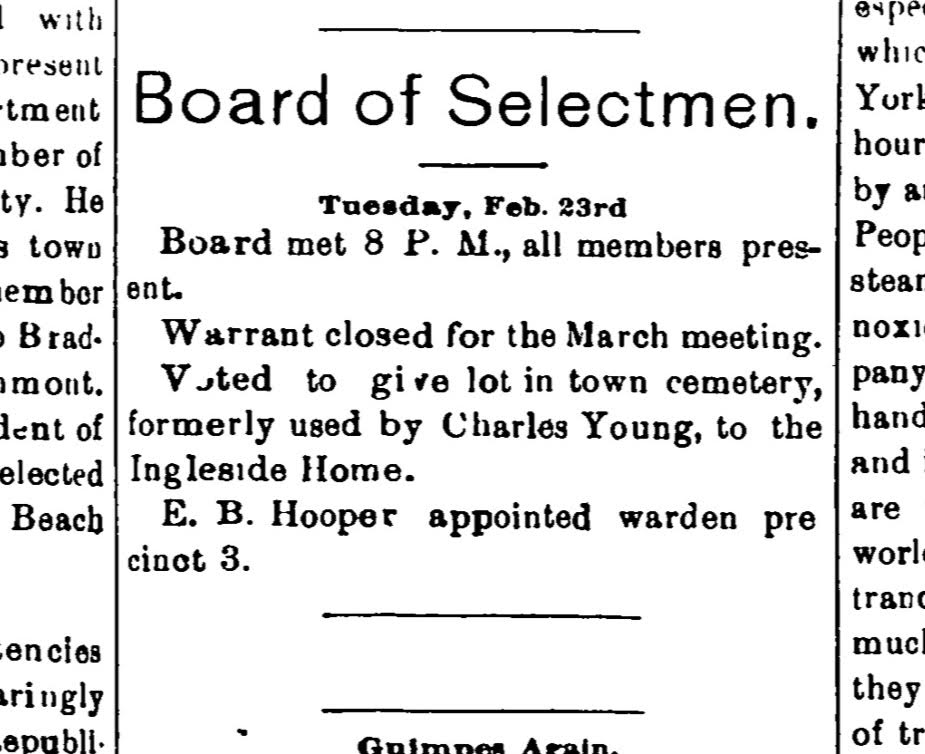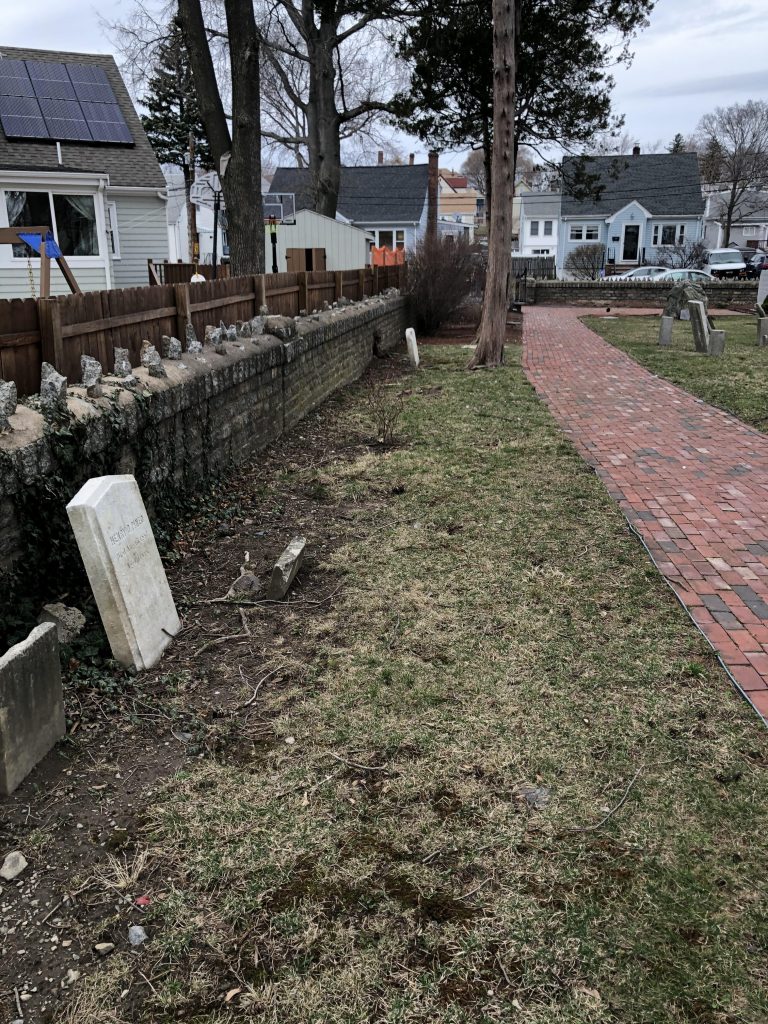A lost part of Revere’s past and its connection to RMBG
In December of 1897 H.T. Whitman and Channing Howard, Civil Engineers and Surveyors from Boston, mapped out what was then called Revere Cemetery. Their document, which still exists in good condition in Revere’s City Hall, includes the names of every person known to have been buried in the “Revere Cemetery” along with the years of birth and death when known. The names are written on the map in neat cursive, aligned as closely as possible to where the person was buried. Whether the names were written by the surveyors or added afterwards by a local historian is uncertain.
This map has been kind of a Rosetta Stone for what we now know as Rumney Marsh Burial Ground. It has made us aware of the final resting places of dozens of people who were buried without gravestones or whose gravestones have been lost. It has helped us to identify people buried under stones that have eroded to the point of illegibility, and even to take misplaced markers and put them back where they belong. Most importantly, it has enabled us to verify and commemorate the unmarked burial places of almost twenty slaves. This map has been instrumental in allowing the history buffs of Revere to continue to learn new things about a burial ground that welcomed its last interment in 1929.

A recent examination of this map revealed a mystery. The words “Ingleside Home” were written in a section of the burial ground that has no gravestones or markers. A quick Google search brought up a blog about a woman named Jeanette Woodbury, who for a time taught at the “Ingleside Home School for Girls” in Revere, but no other meaningful results. The blog included an image that appeared to be an advertisement from an old newspaper but provided no source for it. The ad gives the address of the Ingleside Home as 148 Prospect Street in Revere, currently a private residence.

At this point, with little verifiable information and tantalizing clues the mind wanders to gothic literature scenarios: poor orphans in an underfunded group home, occasionally dying of consumption and being hastily buried in unmarked graves in the dead of night. But it would be irresponsible to declare that RMBG is home to an unmarked mass grave full of underprivileged teenage girls without doing due diligence to uncover as much as possible about the Ingleside Home. Luckily decades of digitized Revere Journal newspapers provide those willing to go down the rabbit hole with enough detail to get some idea of what life was like at the Ingleside Home School for Girls.
The Journal tells us that the Ingleside Home was established in 1895. Two years later a report on a Board of Selectmen meeting tells us that the Board voted to donate a plot in RMBG, previously used by a man named Charles Young, to the Ingleside Home. It does seem odd that a school for teenage girls would feel the need for their own cemetery plot. It may have been a precautionary measure, not a necessity, because girls taken in by the Ingleside likely did not have families with the means to cover funeral expenses. This aligns with my theory that the establishment of larger private cemeteries in the Revere area led to RMBG becoming a potter’s field in the second half of the 19th Century. The growing popularity of larger cemeteries in this era, combined with the oddly large number of “known burials without graves” in RMBG between 1830 – 1900 make it seem as if RMBG became the Plan B for people who could not afford burial in these larger cemeteries.

While we can verify that the home was granted this plot in 1897, we can’t verify if there is anyone from the school actually buried in it. The person who wrote the names on the map was extremely thorough, and continued to add names from the map date of 1897 up through the final burial in 1929, so it seems unlikely that they would have let anyone slip through the cracks. Nonetheless, in the off-hand chance that these unfortunate young women may have been beneath the notice of our unknown historian, we hope to find some verification of burials (or the lack thereof) in this plot.
The only potentially tragic news item to appear in the research so far comes from February of 1908. An article titled “Ingleside Afflicted” describes an outbreak of scarlet fever at the school. Four of the nineteen girls enrolled there at the time were taken to the Lynn Contagious Hospital, the rest were quarantined, and “other measures were taken for the suppression of the disease.” In addition to the outbreak the school’s hot water heater burst and the girls and their matron had to spend a February day without heat while repairs were being completed. The article mentions no deaths, but neither does it mention the fate of the girls who had to be hospitalized.

Click here for Part II
Researched and written by Brendan O’Brien, May 2021. RMBG plot photograph by same.
